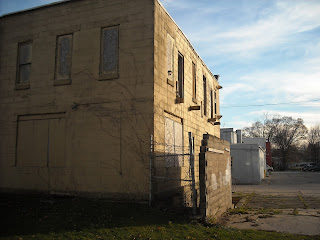Let me tell you a relatively boring story, and then explain
why I believe it represents the most beautiful and compelling truths about
reality.
Two weeks ago, my friend James and I decided to put
in two more garden boxes by First CRC, but we didn’t have any wood. We knew
that our friend Shane is a skilled craftsman who might have some spare. When I
asked him if he had any spare, he went almost immediately to buy some for us
and offered to let us use his heavy-duty drill. With the materials and the
tools, James and I set about to sawing and drilling.
Shane offered to buy us the wood and lent us his drill
freely. To me, that sounds like charity. Was Shane causing dependence in James
and I? Would it have been better for us to learn where to buy our own wood and
to invest in our own drill?
James has played the role of mentor in my life the last few
years. Was this a ministry opportunity for him, to spend more time with me and
guide me along life’s dangerous path?
Or now that I am a Community Connector, was this an
opportunity for me to bring James and Shane together to accomplish a
neighborhood project? Was this part of a Community Development effort to
increase the amount of local food production in an urban neighborhood?
Who was ministering to whom? Was Shane empowering James and
I in construction? Was James providing us wisdom and life advice? Were we
beautifying the neighborhood, creating a local food source, and taking another
small step towards a healthier watershed? Of course, it was all of these
things, and merely a personal project for ourselves. It wasn’t a ministry per
se. It was more than that: we are friends. We all needed each other and we all
provided for each other. We
participated.
If this is does not seem very profound to you, it isn’t.
Participation is commonplace. It’s how we go through life whether we are aware
of it or not, giving and receiving.
Participation is the pattern of everything,
from ecology to theology to economy. Over the next few weeks, we’ll look at
what this means for South Hills, for who God is, and for how we do charity,
development, and justice work. We’ll
begin to think about what is most important to me about this blog, this reality
that we are connected.




